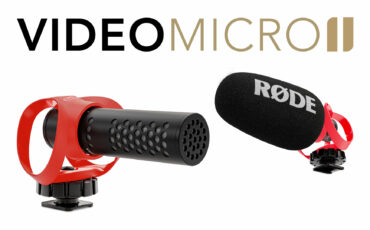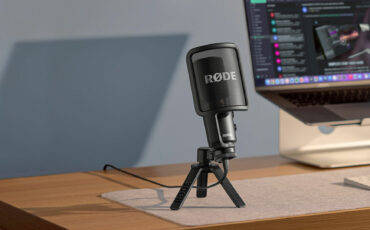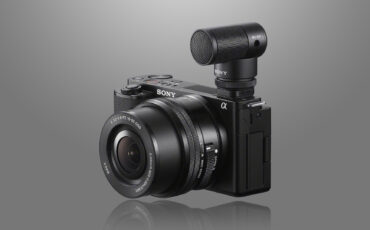Comica Vimo C レビュー – ノイズリダクション付きワイヤレスマイクロフォンシステム
Restriction-free music courtesy of Epidemic Sound. Sign up here: Epidemic
The Comica Vimo C Wireless lavalier microphone system is now available and its unique selling point is the built-in noise reduction feature. Not that we haven’t seen something like it before, but of course, I was curious to see how well (or not) it works in the field. So, is it any good? Let’s find out.
Comica was kind enough to send us their new wireless microphone system, the Vimo C, and in all honesty, the first thing that I did, was to check if it has an external microphone input, which it doesn’t.
Yet, as a professional content creator, I had the urge to break my own working routine and see if there is any justification for working with a product that comes “as is” and is very simple to use.
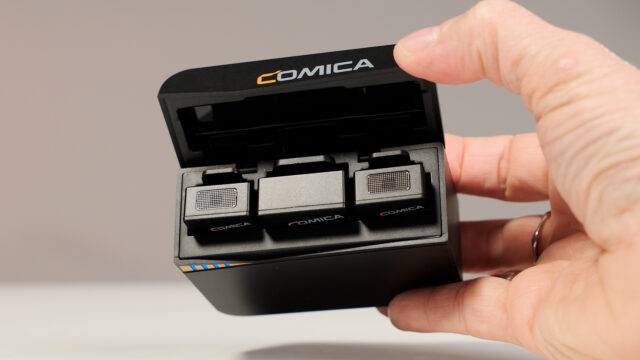
The Vimo C – Introduction
The Vimo C is a 2.4G hertz dual-channel mini wireless microphone system, designed to work with a variety of hosting products, be it mirrorless cameras, mobile phones, or computers.
It comes in THREE flavors, a SINGLE mic and receiver, TWO mics and a receiver, or TWO mics, a receiver, and a battery charging case, and the latter is the one I am reviewing here today.
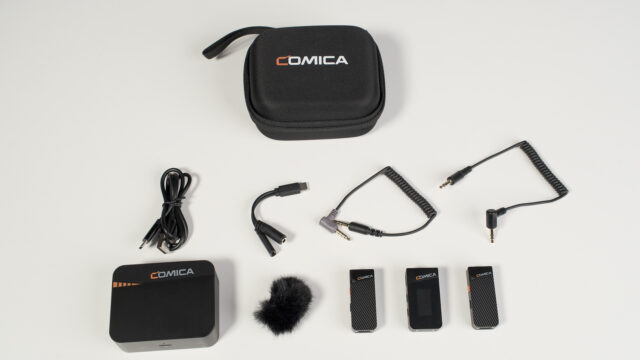
What’s in the box?
When you open the supplied pouch almost all the connecting cables that you could possibly need to immediately start working with this device are there. What’s missing is an iPhone Lighting to 3.5mm cable that needs to be purchased separately. On top, Comica added a multi-functional cable for monitoring the sound from the Vimo C itself (USB-C to USB-C, or, 3.5mm cable). Also to be found is a windshield accessory for battling the wind when recording outdoors.
It is one of the simplest audio devices to operate, as well as the most lightweight and small in size I ever worked with. It’s very straightforward when it comes to using it.
When you take it out of the charging box, both the microphone and receiver will power on automatically, and basically, all you have to do is to look for the solid blue light on the mic itself. This will indicate that both the mic and receiver are now wirelessly connected.
Vimo C – Simple operation
Next is connecting the Vimo C receiver to your hosting device, which in my case was a mirrorless camera.
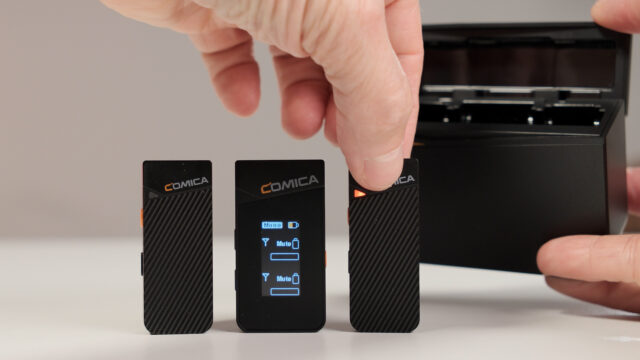
On the mic itself:
There are 2 buttons: the orange one is for on/off or mute the mic, and the other is for turning the noise reduction option “ON” or “OFF”. Mind you that the receiver will remember your last setup so when turning it on again, make sure the BLUE light is there and NOT the GREEN one (meaning, noise reduction is set to “OFF”).
On the receiver you will find the following buttons:
An orange “on/off” button will also serve as a button to change the output recording signal, from “mono” to “stereo” or “safety” (my preferred option as the same track will be outputted in 2 different recording levels to the camera in order to protect the audio from clipping).
Next is the output socket for connecting to the hosting device, and a USB-C Socket for direct charging or headphone monitoring.

There are also 2 additional buttons, “A” and “B”. Each will control the gain recording levels from the receiver to the camera. There are 4 volume control options, and I truly like that the recording levels of each microphone can be controlled separately. By the way, a long press on any of the 2 buttons will flip the viewing mode on the display (very useful when mounting the receiver on the camera hot-shoe).
In the above review, I obviously recorded myself with the Comica Vimo C and I did not process the sound any further. What you hear was recorded directly to the FUJIFILM X-H2 camera.
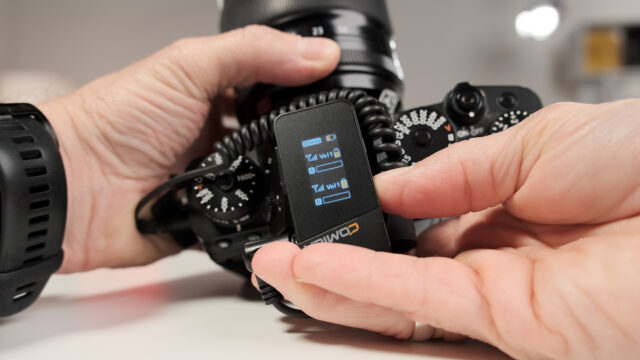
In my opinion, the sound quality is good. Actually, much better than I expected from a modestly priced wireless system that can not take an external mic.
Noise Reduction Function – Is it any good?
One of the biggest selling points of this product is the ability to use the built-in noise reduction recording option.
Unfortunately, I was disappointed by the audio quality when engaging in this option. Logically, it’s not realistic for a single noise reduction “stamp” to fit very many situations. Even my Sony noise-canceling headphone will do a “noise evaluating and adjusting” for the best performance. So in theory, if Comica could have analyzed the noise first and then deployed the noise reduction feature, that would have been great, but it seems this is not the case.
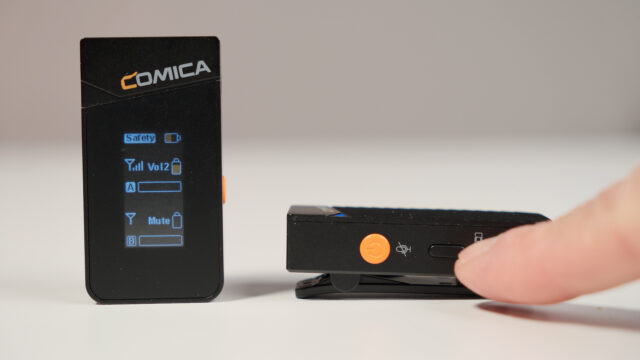
Conclusion
Let me end my review by saying that for the price ($134/€179) this is a good option for having a basic reliable sound as long as you don’t activate the noise reduction option and don’t lose eye site with your camera (otherwise, you risk having a broken sound).
Because it is lightweight and can work for hours when fully charged, it is a good companion for traveling. For me, I’ll be happy to continue using the Comica in situations when talking to the camera but I’ll surely continue to explore its limitations and capabilities as I do see it having potential (perhaps a product firmware update can help with improving the noise reduction option).
Hopefully, for their next generation of mini wireless systems, Comica will consider adding an external microphone input connection option and an onboard audio recording possibility for a hard copy duplication.
Because, honestly, when it comes to audio, I’d rather be safe than sorry.
What do you guys use for your run-and-gun audio setup? Do you have any experience working with Comica audio devices? Please share your thoughts with us in the comment section below.
